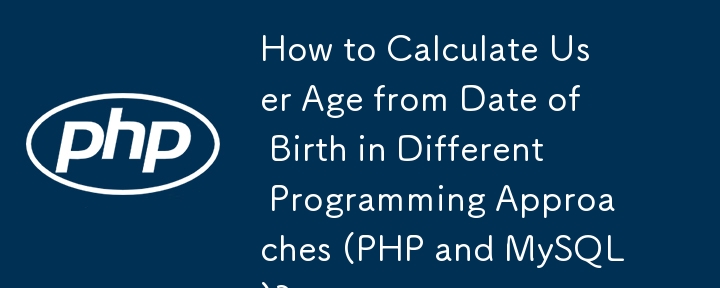Found a total of 10000 related content

How to Create Classes and Objects in PHP 7?
Article Introduction:This article explains class and object creation in PHP 7. It details the differences between classes (blueprints) and objects (instances), illustrates object-oriented programming principles (encapsulation, abstraction, inheritance, polymorphism), a
2025-03-10
comment 0
414
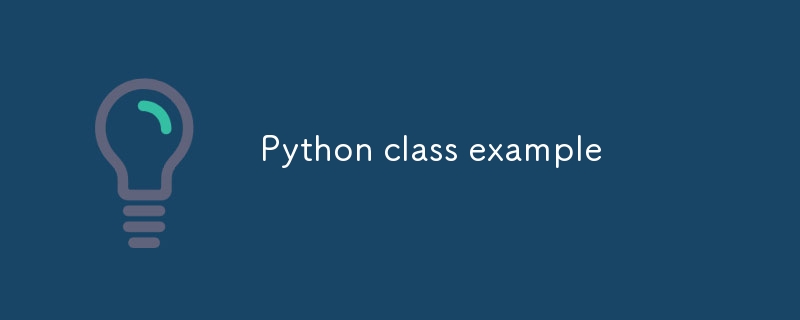
Python class example
Article Introduction:Python's class is a template for creating objects that encapsulate data and operations together. For example, defining a Person class can contain attributes such as name and age, and methods such as say_hello, which can be implemented by classPerson:def__init__(self,name,age):self.name=name;self.age=age;defsay_hello(self):print(f"Hello, I am {self.name}, this year {self.age} years old."). Using class organization code can make the program clearer through encapsulation, such as Student
2025-07-11
comment 0
718

What is a python metaclass
Article Introduction:A metaclass is a "class that creates a class", and the default is to create a class; when you define a class, Python actually calls type('ClassName',(),{}) to generate a class object. Custom metaclasses can be processed before and after class creation by inheriting the type and overwriting new or init methods, such as forcing the implementation of methods, automatically registering subclasses, interface verification, modifying attributes/methods, implementing design patterns, etc. For example, check whether the class implements required_method. Metaclasses are suitable for framework development, but attention should be paid to avoiding abuse, complex debugging, over-encapsulation and other problems.
2025-07-02
comment 0
551

Object-Oriented PHP Syntax: Classes, Objects, and Methods
Article Introduction:Classes and objects in PHP realize code organization and reuse through encapsulation, methods and access control. Define the class to use the class keyword, which contains attributes and methods, such as classCar{private$color; publicfunctionsetColor($newColor){$this->color=$newColor;}}; create objects to use the new keyword, such as $myCar=newCar(); access attributes and methods through the -> operator; public, protected, and private control access permissions to implement data encapsulation; the constructor __construct() is used for initialization
2025-07-16
comment 0
233

C friend function example
Article Introduction:Friendly functions can access private and protected members of a class. 1. It is declared with the friend keyword inside the class; 2. It can define and access private members outside the class; 3. It is not a member function, and this pointer cannot be used; 4. It is often used for operator overloading or cross-class operations; 5. Although it is convenient but destroys encapsulation, it should be used with caution; in the example, the distance function calculates the distance between two points, and the correct output is 5, and can be reloaded
2025-07-24
comment 0
736

How to Resolve \'Class Not Found\' Error in PHP Namespace Autoloading?
Article Introduction:Autoloading PHP NamespacesWhen using PHP namespaces and autoloading, you may encounter an error stating "Class not found." This issue arises when the class being referenced is not within the global scope.Problem:In your example code, the er
2024-10-19
comment 0
430

How to Add CDATA Sections to XML Files with SimpleXmlElement?
Article Introduction:This article provides a custom PHP class, SimpleXMLExtended, which extends the SimpleXMLElement class to add CDATA sections to XML files. It includes a specific example of how to use this class to insert CDATA into an XML document, resolving the issu
2024-10-23
comment 0
1044

What are Java Records (Java 14 )?
Article Introduction:JavaRecord is a feature used to simplify data class declarations, introduced from Java 14. It automatically generates constructors, getters, equals, hashCode and toString methods, which are suitable for DTO, model classes, multi-return value encapsulation and other scenarios; it is not suitable for situations where inheritance, mutable state or complex logic is required. Notes include: default is final class and fields, support for adding methods and static fields, and Java16 supports pattern matching. For example, recordPerson(Stringname,intage){} can replace the traditional POJO class and improve the simplicity and maintenance of the code.
2025-07-05
comment 0
853

Nested classes in python
Article Introduction:In Python, nested classes are used to improve structural clarity between logically closely related classes. For example, when nesting Engine classes in Car class, they can be defined through classCar:classEngine: and accessed through Car.Engine(). Its advantages include namespace management, readability improvement and auxiliary design patterns, but attention should be paid to avoid unrelated nesting, multi-layer nesting and over-encapsulation to avoid increasing maintenance difficulties.
2025-07-02
comment 0
505
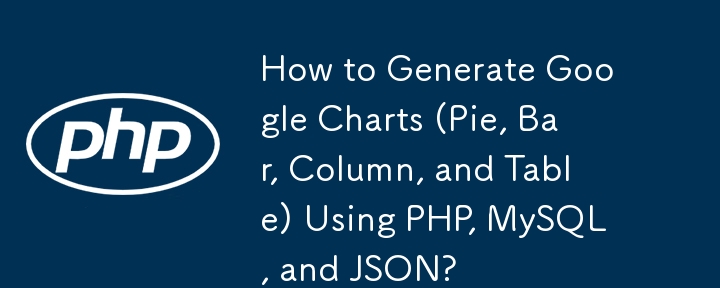

What is a class in Java?
Article Introduction:In Java, classes are blueprints or templates of objects that define the behavior and properties of objects. 1. The class contains variables (fields) to store data; 2. The method defines the object behavior; 3. The constructor is used to initialize the object; 4. The access modifier controls the access method of members. For example, the Car class may contain color and speed fields, accelerate method, and constructor. Create an instance of the class through the new keyword, such as CarmyCar=newCar(30);, each instance runs independently to implement the encapsulation and reuse of data and logic.
2025-07-01
comment 0
796

What is a class in Python?
Article Introduction:Classes in Python are blueprints for creating objects, which contain properties and methods. 1. An attribute is a variable belonging to a class or its instance, used to store data; 2. A method is a function defined in a class, describing the operations that an object can perform. By calling the class to create an object, for example, my_dog=Dog("Buddy"), Python will automatically call the constructor __init__init__init object. Reasons for using classes include code reusability, encapsulation, abstraction, and effective modeling of real-world entities. Classes help keep the code clear and maintainable when building complex systems.
2025-07-09
comment 0
180

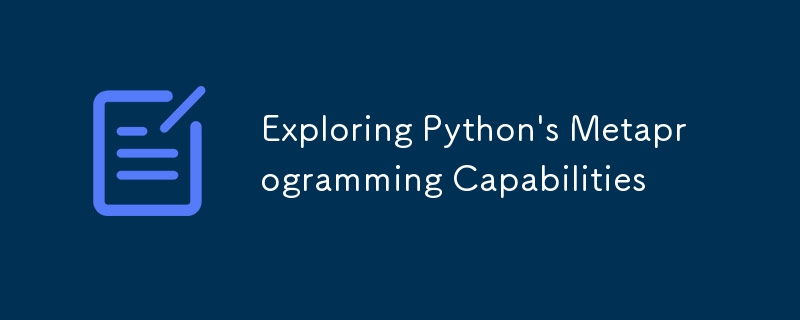
Exploring Python's Metaprogramming Capabilities
Article Introduction:The core methods of Python metaprogramming include: 1. Use type to dynamically create classes; 2. Control the class creation process through metaclasses; 3. Use decorators to modify functions or class behavior; 4. Dynamically modify object functions at runtime. These mechanisms allow developers to dynamically generate or modify code structures at runtime. For example, type can construct classes based on parameters, metaclasses can be used for interface consistency verification or automatically register subclasses, decorators are widely used in property encapsulation or framework routing management, while monkey patches support temporary enhancement class functionality, suitable for testing mocks or emergency fixes, but abuse should be avoided to maintain code maintainability.
2025-07-18
comment 0
416


What is Inheritance and How Does it Work in PHP 7?
Article Introduction:This article explains inheritance in PHP 7, showcasing its syntax and functionality using a parent-child class example. It details advantages (code reusability, maintainability, extensibility) and disadvantages (tight coupling, fragility). The arti
2025-03-10
comment 0
1086
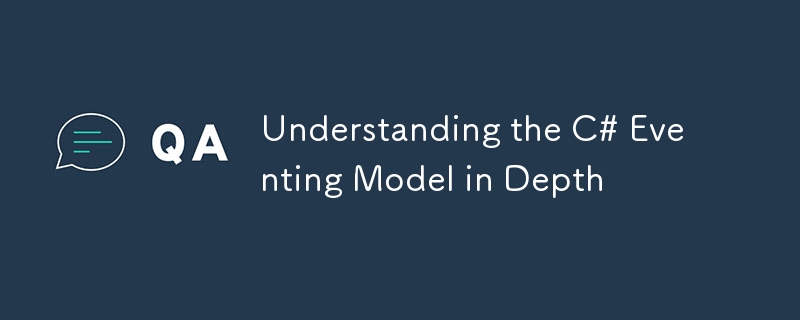
Understanding the C# Eventing Model in Depth
Article Introduction:Events are the core mechanism for implementing observer patterns in C#. It allows an object to notify the occurrence of a specific action without being tightly coupled to other objects. Events are essentially encapsulation of delegates, allowing classes to expose subscription methods without giving call control. For example, the Click event in the Button class is based on the EventHandler delegation. When the button is clicked, the OnClick method will be called to trigger the event. Key points include: 1. Events can only be called by the class that declares them; 2. Subscribers can dynamically add or remove handlers at runtime. When defining custom events, you can create a class that inherits EventArgs and the corresponding delegate, such as FileWatcher class passing through FileChanged
2025-07-09
comment 0
893

